Date of publishing: 30th
May 2007
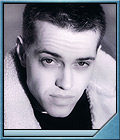 Loyd Bateman works in the movie/TV industry mostly
as a stunt double and has worked in a lot of big productions
such X-Men: The Last Stand, Eragon, I Robot, Underworld:
Evolution, Elektra, ... His TV credits includes also
Stargate SG-1 & Atlantis, A Dog's Breakfast, Blood
Ties, ... His most recent works are a movie called
"War" starring Jet Li, and "In the
Name of the King: A Dungeon Siege Tale" with
Leelee Sobieski, Burt Reynolds & Kristanna Loken.
More information about Loyd Bateman can be found on
his website: www.loydbateman.com
Loyd Bateman works in the movie/TV industry mostly
as a stunt double and has worked in a lot of big productions
such X-Men: The Last Stand, Eragon, I Robot, Underworld:
Evolution, Elektra, ... His TV credits includes also
Stargate SG-1 & Atlantis, A Dog's Breakfast, Blood
Ties, ... His most recent works are a movie called
"War" starring Jet Li, and "In the
Name of the King: A Dungeon Siege Tale" with
Leelee Sobieski, Burt Reynolds & Kristanna Loken.
More information about Loyd Bateman can be found on
his website: www.loydbateman.com
Loyd's Myspace: www.myspace.com/stuntsarefun
Loyd's message board: dazzlingstarz.com/loydforum

 Download the audio interview
by clicking here (Zipped MP3 file)
Download the audio interview
by clicking here (Zipped MP3 file)
Disclaimer: Please,
do not direct link to this file, link to the page
ONLY.
Linda Craddock: Tell
us a little about your role in “Chemical Evil”?
Has a location been determined for the film?
Loyd Bateman: We’ve actually
shot a trailer for it and I was part of the editing
process and part of doing some of the visual effects
on it as well as performing in it. My performance
role wasn’t very big. But I did a lot of the
editing and post production on it.
Linda Craddock: In
the movie “War”, starring Jet Li, John
Lone and Jason Statham, just to name a few, are you
a stunt double for Jason? Tell us a little about the
film.
Loyd Bateman: Yes, I was a stunt
double for Jason Stratham in that movie and it was
an interesting stint because he is a very talent performer
himself, I mean there’s a lot of stuff that
he is physically capable, does a lot of his own fight
stuff so he was really a “stunty” thing,
he did a lot of things on his own so I just kind of
jumped in there whenever he needed to hit the ground
really hard or something. So that was a great experience
for me. It was a great experience working with the
Asian team that, the Chinese team that came over to
do the second unit directing. The design for all the
action on that was, that was a pretty amazing experience
and a good learning process, too.
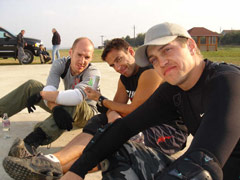 Linda
Craddock: Great.
The movie was filmed in your home town Vancouver.
How convenient was that for you? Linda
Craddock: Great.
The movie was filmed in your home town Vancouver.
How convenient was that for you?
Loyd Bateman: Very convenient, it
works out great (laughs)
Linda Craddock: A
lot of people don’t view credits to identify
background or Stunt Performers. What do you enjoy
most about the role of Stunt Performer and the risks
you take?
Loyd Bateman: Well, it’s interesting,
yeah, I guess stunt performers kind of get lumped
into one region of the credits down at the bottom
of the list, which is fine. It's kind of cool being
the anonymous unsung, I dare say heroes, but the people
who try to pull everything together behind the scenes
and make the stars look as powerful as possible and
as strong as possible and help them achieve that along
with the directors and everyone to make the character
that has been written as talented as possible. So
it's kind of an interesting experience and at the
same time you don’t want to take away too much
from what the actors doing with their character, you
kind of want to blend and be as close to what the
actor designed for their character as possible because
you never want to take away from their performance.
So it’s an interesting position to be in and
it's great too because I mean there’s anonymity
factor. You still get to work on all the movies that
you love and enjoy but you don’t walk down the
street and have people ogling you funny and every
now and again you get kind of someone look at you
like “I’ve seen your face before”.
(laughs) but for the most part it's not really, you
don’t really get viewed as a recognizable face
in a crowd, it's kind of cool.
Linda Craddock: You
and fellow stunt performer James Bamford with whom
you have worked with in an episode of “Stargate
Atlantis”, performed stunts in the movie blockbuster
“X-Men: Last Stand”. How was this project
presented to you and what was your role?
Loyd Bateman: Well actually the way it came around
for us was both of us were working in Hungary at the
time on “Eragon” and one of the stunt
guys we were working on that show with is engaged
to the assistant of the second director of “X-Men”
three so we kind of got back into town late last minute
when they were already shooting a lot of stuff and
so we all kind of through our friend that we had met
in Hungary, she had introduced us to the second director
and the coordinator so they hired us because of that.
Linda Craddock: Talk
a little about the movie “Eragon”.
Loyd Bateman: “Eragon” is a great film
to work on. We went mostly for the last sequence so
we spent 2 ½ months out in a big crater in
the middle of the Hungarian country side, working
six days a week, all night shoots and we kind of made
our own little posse and were around this little town
so on Saturday’s, on weekends, we’d go
and find this little pub and we’d all go and
hang out there afterwards and it really became the
“Eragon” hangout. So it was a great experience
to work with the Hungarians and see the country there
was amazing and then working on the film was great,
unfortunately, a lot of the stuff that we shot didn’t
remain in the finished product. Maybe half of it is
in there, but that’s always the unfortunate
thing, too, about putting in a lot of work into a
show. A lot of it winds up on the cutting room floor.
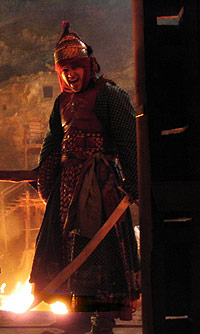 Linda
Craddock: Set the
stage for us and give us an example of the directors
preparation including props and equipment used for
stunts performed for “In the Name of the King:
A Dungeon Siege Tale”, with Jason Statham. Linda
Craddock: Set the
stage for us and give us an example of the directors
preparation including props and equipment used for
stunts performed for “In the Name of the King:
A Dungeon Siege Tale”, with Jason Statham.
Loyd Bateman: That was an interesting
film. I wasn’t a double on that one. I was what
they called “crubbs”. So we were wearing
prosthetic suits for that show and that was a very
difficult experience. The setup for that was basically
with any stunt in general. The director will say what
he wants. They’ll talk to the stunt coordinator.
The stunt coordinator will prepare what they could
do with a scene and then start to plan it out and
then get together to do some rehearsals and figure
it out so we can sort of organize what’s gong
to happen. And usually you film it, stick on a DVD,
show it to the director so they can get approval on
it and then take it to more rehearsals and then shoot
it. So that’s usually the way that it works.
Again, “Dungeon Siege” was an interesting
experience because we worked mostly on the second
unit and that was the second unit director Tony Ching,
he did the movie “Hero” and “Hose
of Flying Daggers”, two very popular Asian films,
so again, it was a very interesting experience because
the way they work in China, fast, fast pace. And all
of us who were in these prosthetic suits, didn’t
really have time to get used to them or prepare because
the sort of work all of their own stuff out and then
they just through people wherever they’re needed.
So we wound up having to do very fast fights and things
in these two or three inches of foam rubber 7:30 in
raw field into the suits and nobody was really prepared
for that so there were some difficulties with hydration
and all that on the first day, particularly. It was
one of the most challenging days I’ve ever had
actually.
Linda Craddock: Wow
Loyd Bateman: Yeah, very difficult - having people
ripping their masks off. One person had to be cut
out of the suit. It was a very difficult show to begin
with and eventually we all got used to it. You build
up a tolerance for it but yeah, the pace was amazing.
It was so fast and the weather was so hot and we were
not used to these very thick prosthetic suits that
don’t allow for much flexibility and there’s
no room to breathe and basically it’s like wearing
a triple thick wet suit in the hot sun. It was very
difficult, but it was a fun show. We had a lot of
fun on that. We got to do things you would normally
not get to do in those types of gear and it was pretty
cool. It was a good show.
Linda Craddock: Stunt
performers are obviously in tip top physical conditioning.
What do you do to stay in shape?
Loyd Bateman: Personally, I go to gymnastics a couple
of nights a week so I definitely train in acrobatics
and things in an environment that’s suitable
to it trampolines, sprung floors and things. A lot
of times I’ll go out to my sister’s place
and ride horses. I’ve been down to L.A. to do
a couple of driving courses and motorcycle driving
courses and I work out 3 or 4 times a week outside
the gymnastics. I do martial arts. You sort of try
to cycle things, mix it up. My main martial arts is
Capoeira which is a Brazilian art form. That is what
I started with. I started doing that 12 years ago
and that was what actually lead me into doing film
work which was great.
Linda Craddock: You
were stunt coordinator for David Hewlett’s directorial
debut in the short film “A Dog’s Breakfast”.
What were some of the points of interest as coordinator
working with a familiar cast from “Stargate
Atlantis” and "Stargate SG1"?
Loyd Bateman: It was interesting
because what happened was James Bamford was the coordinator
for the show and there was a few days where he wasn’t
available so he asked me if I’d cover for him
so on the cover days when I was there, it was great
because I was already friends with them with a lot
of the cast members from working on “Stargate”
on both shows “SG1” and “Atlantis”,
so I really felt comfortable. I didn’t feel
like, I didn’t have to get to know a whole new
cast of people. I didn’t have to try and ingratiate
myself with people who weren’t sure about me
because they already knew me so it was good all around.
We all got along before that ever happened so it was
great. We were sort of comfortable and familiar to
step in and do what I do and help them out with their
show. A great experience, yeah.
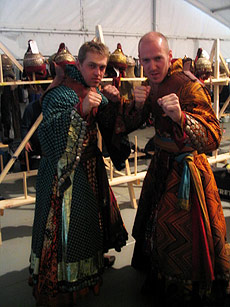 Linda
Craddock: "Underworld:
Evolution" – Were you a Lycan in this film? Linda
Craddock: "Underworld:
Evolution" – Were you a Lycan in this film?
Loyd Bateman: No, actually I was
one of the vampire in the opening sequence. If you
were watching the opening sequence, there’s
a bunch of soldiers on horses and three of us on foot.
It looks like there's 20, a hundred even, but there’s
only three of us, there was myself, Jeff Robinson
and Paul Wu were the foot soldiers and we did all
the ground fighting in that sequence and there were
5 or 6 guys on horses who were doing the horse falls.
One of the biggest stunt I did in there was, I did
what we called an “air ram”, backwards
through the barn wall into the interior of the barn,
then get up and fight a couple more werewolves inside
the barn.
Linda Craddock: In
the film “Blade: Trinity”, you were a
stunt performer also. Tell us one of the most challenging
aspects of that movie for you.
Loyd Bateman: That film –
there was a bit of a political fiasco so there was
a coordinator that left and then he was replaced so
there were some interesting things that I had never
experienced at the time being fairly new when that
movie was filmed so that was an odd experience but
also a great learning experience. I learned a lot
about doing fight scenes in big features. Before that
point I’d done a lot of bits and pieces on TV
shows but actually being part of a feature film experience
is different because usually TV shows everything is
really rushed. In feature films you get a lot more
time to rehearse and a lot more time to plan things
out and I got to do some bigger stunts rather than
just doing fighting which was cool. I got ratcheted
backwards through a window in the Phoenix tower sequence
at the end of the film and also ratcheted into the
ceiling walkway in that same sequence so it looks
like it’s different people but I did both of
those stunts there and it was really great and in
a few other places like in the police station where
some of the guards were running through shooting at
him. They did a sort of Montash where they were beating
up all the familiars in the sequence, I was one of
those, in one of those sequences as well. They pepper
you a lot throughout the film. That’s one thing
that happens a lot to stunt performers. You never
really notice as an audience member but the same person
could be used for 3 or 4 different things throughout
the film and change wardrobe and dye your hair and
whatever and they’ll put you somewhere else
and do another piece. So that happens quite frequently.
Linda Craddock: Yeah,
that brings me to another question, I was going to
ask you that very thing about the stunt performer
for a project are you required to report to location
at the beginning of the shoot, do you remain for the
entire production shoot, or are you just there to
perform the task hired for, it was that information
I was looking for.
Loyd Bateman: Sometimes it’s both, actually.
Sometimes you could just be called in for a day, sometimes
you’re there just for a day or two depending
on the stunt you are required to do is. So maybe you’ll
do a rehearsal and just that day on the entire show
and that’s it. Sometimes you could be on for
the run of the show. So sometimes if there’s
a, they have a small group of people that they need
or if you’re a lead double or whatever or you
can get onto the show for the whole run of it or you’ll
just get called in for a day or two, so it depends.
Linda Craddock: The
movie “I, Robot” was certainly very high
tech with CGI. Give us a little background on coordinating
stunts for the special effects sequence?
Loyd Bateman: The way that they did it, on that show
specifically – a lot of shows are different
but at that time and the way that they would shoot
it, they used a system called “motion control”
where a camera would be able to do exactly the same
pass over and over again. So what they would do is
they would shoot a scene on a green screen or on a
set location and they would have stunt performers
wearing green costumes as a reference for the artist,
for the computer graphics artist. So they would make
the camera do, the thing pan once with the performers
in green, and the actors and then they would do another
pass exactly the same move with just the actors so
that the CG artist could compare the two and it makes
what they call a clean slate for them to be able to
paint parts out and put in the animation and CG effects.
Then they would do a third pass which is the total
clean plate with nobody in it and then they do a forth
pass with a light reference, which is like a grey
ball, a shinny ball so they get the shadows and the
reflections of where the lighting is in the room.
That way they can layer it all together and use the
reference pass and everything and put in the 3D character
and match it up to the environment so that it looks
naturally in that environment. So basically you have
to make the movie 4x’s over when you do it that
way.
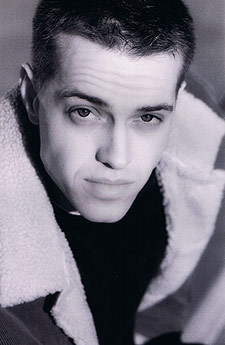 Linda
Craddock: I would
imagine when you are cast as a stunt double, that
the requirements would be that the stunt performer
at least share the same body type, complexion, perhaps
close in height and weight proximity? With today’s
technology with video movement in action films particular,
have there been a lot of deviation from those criteria? Linda
Craddock: I would
imagine when you are cast as a stunt double, that
the requirements would be that the stunt performer
at least share the same body type, complexion, perhaps
close in height and weight proximity? With today’s
technology with video movement in action films particular,
have there been a lot of deviation from those criteria?
Loyd Bateman: Not as a stunt double.
Usually that’s exactly what it is. The performers
will go in for a “look see” and they’ll
call in a couple of different people who have similar
shape and size to the actor that needs to be doubled
and they usually stand you right next to the person,
man or women and compare you to see if you look close
enough and if you don’t look close at all and
they just basically do it that way. As much as computer
technology and everything has changed, the fact of
the matter is it still takes a lot of time and costs
a lot of money to do. Anything you can avoid doing
in close production is better. If you can match up
the hair line and all that stuff and make sure your
body type is as close to that performer’s body
as close as possible then that’s usually the
way they’ll go. Sometimes it’s a matter
of preference on the coordinator’s part, too.
I mean if there’s two people that are very similar,
they’ll go with the person they either trust
more or know has the best skill set. They’re
a few other factors too. Sometimes somebody’s
not quite as good as a double but they’re an
amazing driver. In a car, it really doesn’t
matter if a person is 6” taller. So if you’re
sitting down, it’s no big deal. So for example
you could be a great match for the person but if it’s
a driving show, they’ll use the guy whose a
better driver, of course, or vice versa, if it’s
a fight show, and you have a guy whose a gymnast or
somebody whose really good at hitting the ground but
never done martial arts, they’re not going to
get picked for the role, either. So that’s sort
of a two fold thing, there are specialists and there
are general performers who are pretty good at a lot
of things so we try even though specialist is the
easiest way to get into the business, you usually,
once you get started working, you want to try and
broaden your skill base as much as possible so that
you can do as many things as possible. With the job,
half the time you’ll go in, you won’t
be able to do the job if you’re not able to
do the skill set that’s required.
Linda Craddock: Let’s
talk about the 5 episodes in the TV series “Blood
Ties” and your role as stunt double for Kyle
Schmid’s character “Henry”. How
did you get involved with this particular project?
Loyd Bateman: Actually it sort of came out of the
blue. The coordinator for the show, Steve Mc Michael
called me up and I guess he had a couple of people
in mind, but I was at the top of his list for choices,
at the time so I went down and met Kyle and we started
rehearsing and training together a bit and it kind
of went from there.
Linda Craddock: Yeah,
I remember the second episode where I actually caught
a glimpse of you in the fight scene at the skate park.
Loyd Bateman: Oh, right, yeah
Linda Craddock: Do
you have a hero and mentor?
Loyd Bateman: I do actually. My mentor
and my hero for me, my Capoeira Master, my instructor
Mestre Bãrrao and he’s basically –
when I started training, he taught me everyting that
I knew from the martial arts but was also a good guide
for me in life in general. Taught me to pursue what
I was interested in and if it weren’t for his
blessings and teachings I never would have been able
to get involved in film and follow the dreams that
I had had.
Linda Craddock: You
have obviously met a lot of people in your career.
Tell us one of the most valuable lessons you have
learned as a stunt performer?
Loyd Bateman: well, actually the most important lesson
came from just learning to be good to all the people
you work with and just be straight forward and honest
with everyone and make sure you are, what’s
the word I’m looking for, integrity. Have integrity
in everything you do and that usually works for everybody
no matter their personality or temperament, it just
makes work go so much better. So that’s pretty
much the most important thing I learned through so
many different people.
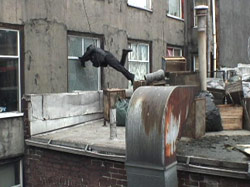 Linda
Craddock: Have you
set any goals to be more visible on camera as an actor? Linda
Craddock: Have you
set any goals to be more visible on camera as an actor?
Loyd Bateman: Not really. Actually
the direction I’d like to head in eventually
is directing. Me and other friends get together and
we shoot projects and shorts and things that we’re
interested in because we want to learn more about
that side of the industry as well, the production
side as well as the performing side so for me, I think
that’s kind of more the direction I’d
like to go with it. Learn about that. That’s
where I am trying to set my focus. I don’t mind
being on film every now and again I’ll get role
that’s sort of a stunt actor thing where you
get a line or two or you’re a character with
your face and then you do a stunt so I like that type
of stuff. That’s always been great because you
really get to show your face on film and when you
look at it later, it’s you. You don’t
have to see someone else, and then you do your stunts
and then back to the other person so it’s kind
of cool to be your own character but I think I’m
more interested, actually in directing films.
Linda Craddock: Well,
you mentioned the challenges in “The Name of
the King” and I was going to ask you to tell
me what two projects were the most challenging and
took more preparation than usual?
Loyd Bateman: (laughs) Well “Dungeon
Siege” was definitely one of them and let's
see, probably “Eragon” because of language
barriers and a foreign environment and that sort of
thing but I love what I do so I don’t really
think of it as a challenge. It's always hard, difficult
and it's always a process, but it’s an enjoyable
process so I never really fill like I’m working,
do you know what I mean?
Linda Craddock: Yeah
Loyd Bateman: I always feel like
I’m doing what I like doing so its never a hardship,
it's never like too much even when it's really, really
difficult. I never really think about how this is
too hard. It's all a great challenge, but it's all
an enjoyable challenge. That’s kind of the way
I view it but “Dungeon Siege” was one
of those that made you break a sweat.
Linda Craddock: Talk
about your most serious injury as stunt performer
and what project you were working at the time?
Loyd Bateman: Actually I haven’t
been injured too bad. I got a bit of a concussion
on “Blade III” and I had banged my head
and split my brow open on “Blood Ties”
and had to go get stitches but I haven’t really
broken anything. My most serious was in training.
I torn my ACL actually doing a fighting competition,
I think it was in 2000 and had to have that rebuilt
and I also dislocated my left elbow, bent it back
all the way the wrong way, some training as well,
so I had a few tears, difficulties bending the wrong
way but it's all usually training because you get
into that mode and every now and again, you have a
bit of a doubt in your brain and that usually leads
to a crash and hurt yourself that way, but performance
wise I haven’t (knock on wood) bashed myself
up too bad.
Linda Craddock: Thank
God
Loyd Bateman: Yeah, thank God
Linda Craddock: I
noticed on your website you have what is called a
“stunt list” for union members, tell us
a little about the membership.
Loyd Bateman: The way that it works
at the moment, it's actually just a phone list at
the moment. Performers who are in the union, to get
into the union you have to be one credit as an apprentice
on a union show and then you have to get six credits
to become a full union member and then to get onto
the stunt list you have to you actually have to have
six stunt credits so performing actual stunts. So
if you’ve been called and hired for an actual
stunt, and you sign your contract for that, then that’s
considered a stunt contract at some credit to get
you onto that list which is basically a phone list
that coordinators use in order to look for people
if they need different people and it's got sort of
height, weight, shape, all types of stuff so that
the coordinators can show it to producers and directors
and try and hire people from there.

 Talk
about this interview on the forum
Talk
about this interview on the forum
|